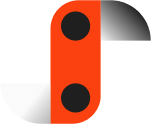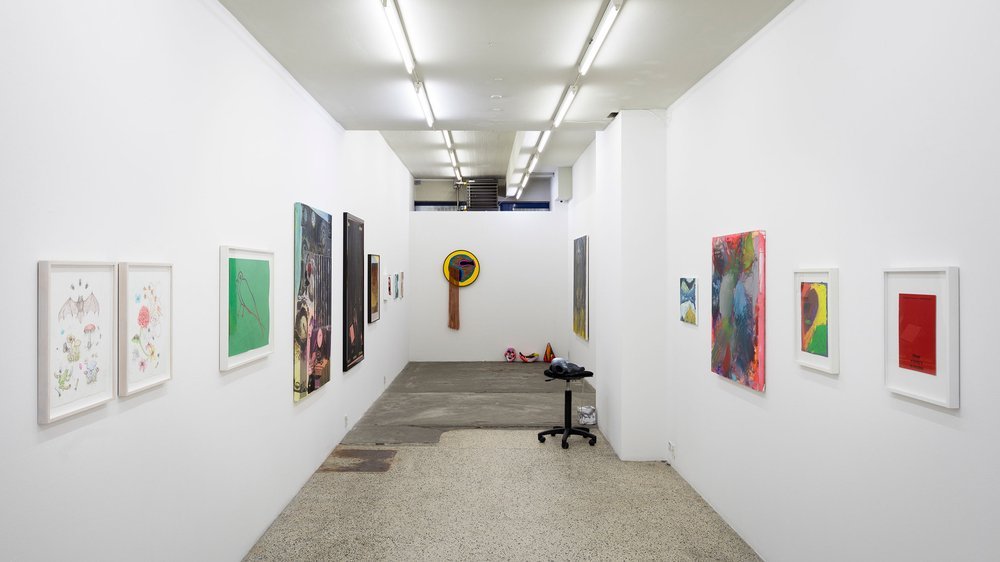Gripface: From the outside in, and inside out.
*Archive Article: Originally published in the magazine Blacklisted Copenhagen on January 02, 2019
Full disclosure: I have a particular penchant for art that harkens back to the melding of skateboard, poster and street art in the early ’90s—something where Spanish artist Gripface checks all the boxes.
Long before I packed my bag and relocated to Copenhagen, I spent most of my time on four-wheels and a slab of wood popping from skatepark to skatepark all across the Northwest of America.
From the snake-run bowl in White Rock. B.C. (Canada), across the border and down through my hometown of Seattle, and continuing on to Portland’s DIY skateboard Mecca, Burnside – life outside of my menial 9-5 was nothing but a series of skateboard road trips. All along those journeys, I was surrounded by a community of artists, illustrators, and misfits eager to introduce the world to the kind of creative trouble I was looking for.
This brings me to the artwork of Spanish artist Gripface. His murals and artworks can be found throughout cities all over Europe – mainly concentrated in Spain. But if you know what you’re looking at, and the history behind it, you will notice his style and methods have evolved in much of the same ways of that of his peers. It is a journey that began on the streets with skateboards and spray cans, but has now moved into the gallery space.
The signature Gripface style
His outside work now many consists of immense murals, while his gallery and indoor work cross into graphic design, installation, print work, and paint. Beyond the initial aesthetic appeal, for me, Gripface’s work is an immensely fascinating look at how a pre-social media art movement spread across the globe, to influence artists like Gripface, purely through the strength of communities that exist around skateboarding and graffiti.
As these art movements have matured so far beyond the mere DIY, I wanted to get Gripface’s own perspective of this growth and maturation of the artform. And what it was like for him coming up on the streets of Palma de Mallorca, Spain.
INTERVIEW
When I look at your work, I am immediately taken back to skateboard days in the mid-’90s, collecting stickers by the likes of artists like Barry McGee, Ed Templeton, and Dalek. I get the impression that you got your start on the streets, but I don’t want to make assumptions. So, tell me where you first start developing your style.
I started skating and painting graffiti when I was 13, and both worlds influenced me a lot. My parents enrolled me in classical painting schools as a child but what really absorbed me was all that graphics from the world of skateboarding and graffiti books.
Was there a supportive independent art scene in Spain as you were coming up, that you could find support and knowledge in? Are you still active in that scene?
Yes, in Spain there has been and continues to be a very interesting art scene, both in different artistic circuits… The most mainstream and the most underground. But I never belonged to any particular scene, I was always independent.
I’ve always been a very eclectic person, and I’ve been influenced by very diverse currents from the world of art and other disciplines, so when I’ve worked with art galleries I was the strange artist who comes from the world of urban art, and when I participate in street projects I’m the artist who comes from the world of galleries.
Your work spans many disciplines – from installation and print to paintings and murals. When did you start experimenting with different mediums in your work?
I began to experiment in my first exhibition formats, I always liked to play a lot with the space in exhibitions and I was bored with the classic formats of simply exhibiting paintings or drawings, I always believed that it was necessary to experiment in the exhibition format and later in the urban space.
How do you feel the landscape for public (street) art has changed, particularly in your native Spain, over the years?
In Spain as in other countries in the world today there is an important boom of artists who are using the street as a means of work, there are more and more festivals of urban art and projects related to this artistic trend. The truth is that there is a positive and a negative part, the positive part is that the scene is growing and many interesting artists who never dared to work in the street format are participating and very interesting projects are being generated. On the other hand, when something becomes fashionable it loses a certain essence and can become perverted, the urban interventions of the last decade were generated in a more furtive, more savage way
It seems you have just as many examples of your work out in the wild of the streets, as you do within the confines of a gallery space. How do you split your time between working out in the public, and work towards exhibitions?
For me the two things go hand in hand, that is to say, I need to work in both circuits because one thing complements the other, in the exhibition space I like to link it with that bridge of interior and exterior space, of the illegal and the legal? And also for me, it is necessary to maintain that wild essence of urban art – for example, the work with galleries or art centers does not give you that adrenaline. But if I need to work with exhibition space, I like to rethink the concept of “exhibition” constantly, and it is a good format to experiment.
I was super stoked to see that you did a cover of The Stranger this year…a magazine from my hometown Seattle, and a major inspiration for me starting Blacklisted four years ago. Do you find yourself being requested to commission a lot of works like that?
I was looking forward to making the cover for The Stranger, I hadn’t done this kind of commission in a while. For a while, I did work on some illustration and graphics projects, and I still find it interesting, the only thing I have to feel August with the project and full freedom.
Looking back over the years of your work, how do you feel it has evolved, and where do you think it’s going next?
Looking back if I see a great evolution in my work, in reality, I am a person who likes to evolve constantly and not settle into any field. I need that sense of freshness to make new projects and research in new fields. I am happy in this current stage because I am in a moment where I really do what I have always wanted with total freedom and constant experimentation. I am increasingly proposing more ambitious projects with more artistic weight.
In your particular field of art, developing a recognizable style is a huge milestone. What advice would you have for artists looking to follow in your footsteps?
The best advice I can give you is to believe in your work and learn from the failures that are the great masters. You have to fail a lot to be able to go the way you want to go, and in this world it is essential









